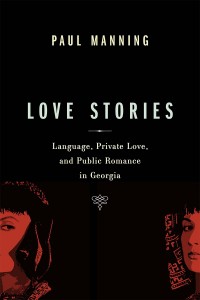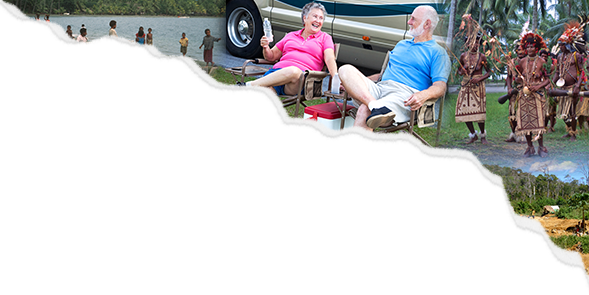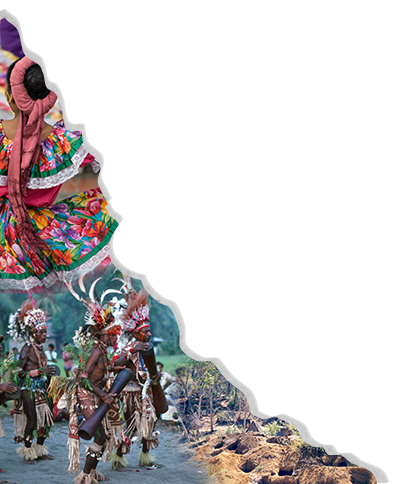The sexual lives of others. It may seem a new and tantalizing topic for an ethnography, yet this particular genre has a long history in anthropology. In the early twentieth century, Bronislaw Malinowski’s The Sexual Lives of Savages and Margaret Mead’s Coming of Age in Samoa challenged the naturalization of sexual normativity of Western culture, by showing other places and other people whose romantic and sexual lives were arranged quite differently from our own. However, myriad texts on kinship, long a staple of anthropology, managed to take both the romance and the sex out of the story in favor of marriage, procreation, inheritance, and alliance. Another way in which anthropologists took the “sexy” out of sex is by replacing intimate native discourses about sex and romance with anodyne analyses of lineages and kin groups. As a linguistic anthropologist, I turn my attention to the fact that sex is not only about, well, sex, but how people talk about sex. In Love Stories: Language, Private Love, and Public Romance in Georgia, I address a distinctive way of ordering sex, reproduction, and romance among the Khevsurs of Georgia. As a linguistic anthropologist, my goal was to use ethnography to illustrate the pervasive role of language in mediating some sphere of social life, in this case, sexuality. Language and sexuality are explored through the linguistic genres of romance such as conversation, poetry, and gossip.
 The value of Love Stories, it seems to me, is that it shows a cultural system of sexuality in which an autonomous sphere of purely elective, playful, romance is paradoxically separated strongly from both marriage and sex. This kind of pure, unfettered “sociable” romance is alleged by sociologists like Anthony Giddens to be something specific to “modernity.” Indeed, he only brings in premodern sexualities as a foil to show that premodern sexual relationships boil down to marriage for economic reasons. For Giddens, what is really interesting about this unfettered modern form of intimacy is that it is a harbinger of political emancipation that is democracy. In this reductivism, in which romance is only interesting insofar as it is secretly about the political, Giddens is similar to traditional social anthropologists who had little use for talking about love or romance, tending to reduce all discussion of sexuality to kinship (that is, political alliances). Interestingly, the Khevsurs also see their unfettered romantic practices as resulting from indigenous political virtues of equality, autonomy, and self-restraint of individuals who characterize their political system as a whole.
The value of Love Stories, it seems to me, is that it shows a cultural system of sexuality in which an autonomous sphere of purely elective, playful, romance is paradoxically separated strongly from both marriage and sex. This kind of pure, unfettered “sociable” romance is alleged by sociologists like Anthony Giddens to be something specific to “modernity.” Indeed, he only brings in premodern sexualities as a foil to show that premodern sexual relationships boil down to marriage for economic reasons. For Giddens, what is really interesting about this unfettered modern form of intimacy is that it is a harbinger of political emancipation that is democracy. In this reductivism, in which romance is only interesting insofar as it is secretly about the political, Giddens is similar to traditional social anthropologists who had little use for talking about love or romance, tending to reduce all discussion of sexuality to kinship (that is, political alliances). Interestingly, the Khevsurs also see their unfettered romantic practices as resulting from indigenous political virtues of equality, autonomy, and self-restraint of individuals who characterize their political system as a whole.
One pedagogical value of using ethnography to approach sexuality is that it can challenge the naturalization of sexual and gender normativities that students (and scholars) often take for granted. Love Stories continues the tradition of using ethnography to challenge naturalized ideas about sexuality and gender, alongside other ethnographies within the literature on sexuality, such as Don Kulick’s Travesti, or Patrick Galbraith’s various ethnographies of virtual romance among Japanese manga/anime subcultures, which have inspired me to write this book. In this case, we have an ethnographic example which seems, at first glance, to have all the same elements of a more familiar heterosexuality (sex, marriage, romance), but the way the different elements are put together results in something that seriously undermines a lot of universalizing preconceptions of what heterosexuality might look like. It’s a bait and switch, so to speak: the students confront a form of romance that is somehow familiar, which then begins to seem strange and paradoxical. As the narrative progresses, they come to understand the allure, the romance, of Khevsur modes of heterosexual interaction.
Students will find their generalized assumptions (that, all other things being equal, romance is anticipatory to marriage, or that sex is the normal expression of romantic love) challenged by Khevsurs who see love and marriage as having completely different purposes and objects, and express their love precisely by holding their sexual desires in partial check. As a result, Khevsur romance at some points seems like a paradoxical “anti-marriage,” at other times like a paradoxical “sex without sex.” Since Khevsur sexuality engages gender, students’ equally strong preconceptions about gender in the Middle East will be challenged by the agency and autonomy displayed by girls in the Khevsur community (making this book readable alongside Lila Abu Lughod’s Veiled Sentiments or Anne Meneley’s Tournaments of Value). Khevsur romance is a counterpublic in which girls run the show: from arranging trysts, to writing love poetry, to stealing and hiding vodka for their lovers. Based on the stories collected by an indigenous female ethnographer, it is female characters that are centre stage in this ethnography.
The book itself falls into two main parts. The first section is an ethnography of indigenous romance as it existed before the fateful day when Stalin ordered the entire populace of Khevsureti be transferred to the plains of Georgia in the early 1950s. This section follows the biography of a “typical” romance through various stages. A traditional Khevsur romance starts with flirting and casual dalliance expressed in kissing and casual conversation. Later, as it becomes serious, it goes semi-public among the peer group, at which point maintaining the relationship in the face of separation, gossip, rivals, and fighting becomes a problem, and romance expresses itself in poetry and gift-giving. Finally the relationship ends, always tragically, either in marriage to a stranger, or suicide, or elopement and exile, or rebellion against the rules of the relationship, or in nostalgic remembrance as old women allow their private love poetry to become public. Each stage of the relationship involves different erotic and non-erotic practices. More importantly, different linguistic genres associated with each stage match the non-linguistic practices: the early, sociable, casual dalliances (the erotic for its own sake) between peers are mostly characterized by casual conversation (for its own sake). More durable relationships are established by making pledges which mimic the performative oaths of sworn siblinghood. Maintaining these durable relationships involves girls composing and circulating love poetry and stealing, hiding, saving, and eventually drinking vodka with their boyfriends after long absences. Eventually, we even see a minor sexual revolution happen in one region which throws the entire community into turmoil. Different genres of linguistic and erotic practice inform each stage of the relationship from beginning to end.
The second half of the book is more of a detective story. Studying intimate practices like romance really isn’t like studying other things people do: you can’t observe it, and it’s either dangerous or impudent to ask questions about it. It is “covered in the mist of secrets” as one outsider Georgian ethnographer puts it: many outsiders who wrote ethnographies of the area didn’t even know it existed in the first place, and many early indigenous ethnographers apparently felt it was too embarrassing or scandalous to talk about. So this section of the book explores the question of how anyone ever came to know about these practices, beginning with an ethnography of the romantic and professional life of the same indigenous female ethnographer, Natela Baliauri, whose ethnography provides the material for the first part of the book. It turns out she became an ethnographer of traditional romance precisely because she was exiled for breaking some of the rules of traditional romance.
From there, the book briefly explores how this romantic practice circulates within the space of the nation, again showing how images of romance, the sexual lives of others who are also Georgians, is reflected and refracted through various non-speech genres that make up modern national culture. These genres include folklore, journalism, and ethnography in early Georgian newspapers, to ethnographies and novels in the 1930s, to Soviet era films in the 1960s, and finally to contemporary internet forum discussions among Georgian teens. So this local form of romance becomes part of the romance of the nation.
A book about romance and sexual practices which foremost include not having sex and talking about it, make this book, in the words of Don Kulick, “a walk on the mild side” of a universal practice which has myriad cultural variations.
Paul Manning is Associate Professor of Anthropology at Trent University and former editor of the Journal of Linguistic Anthropology.



